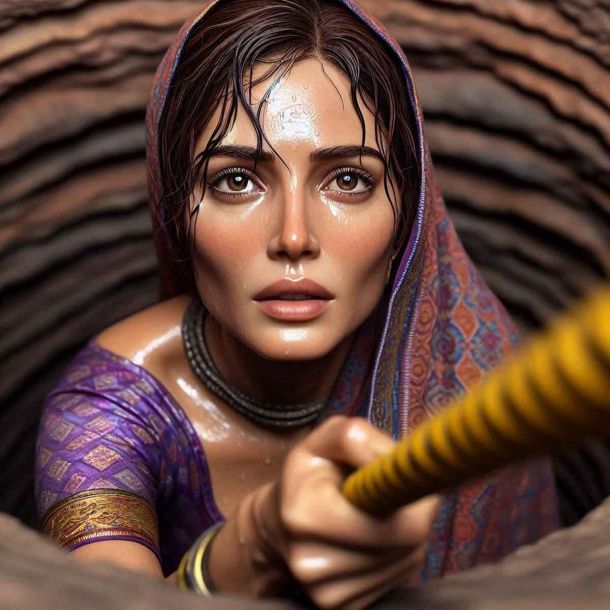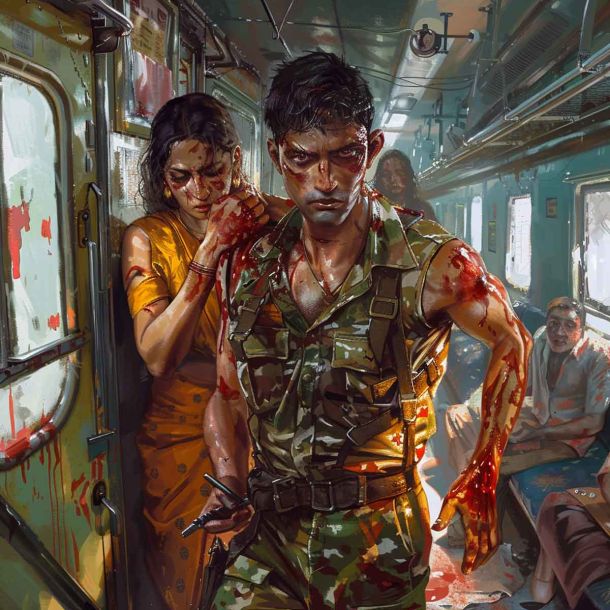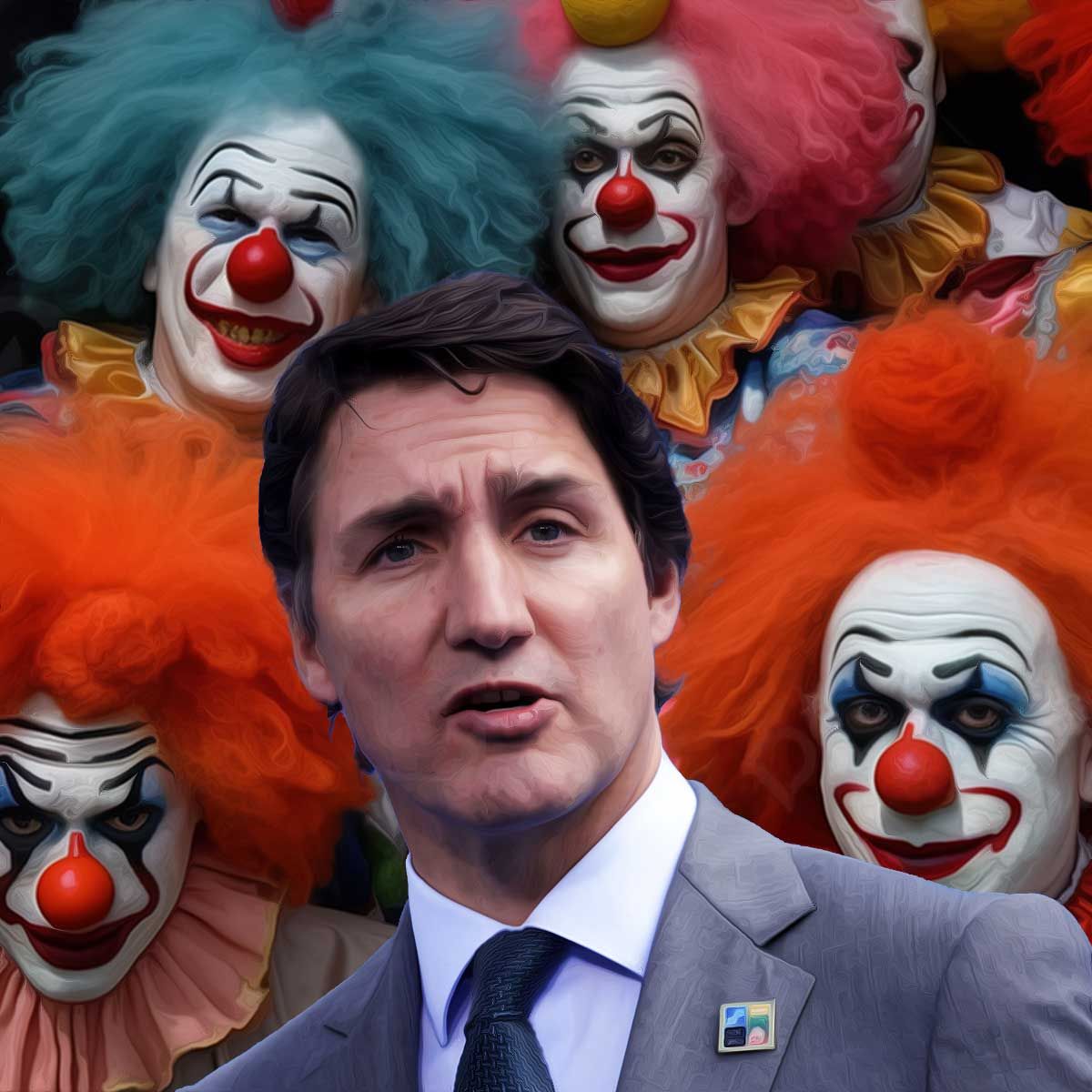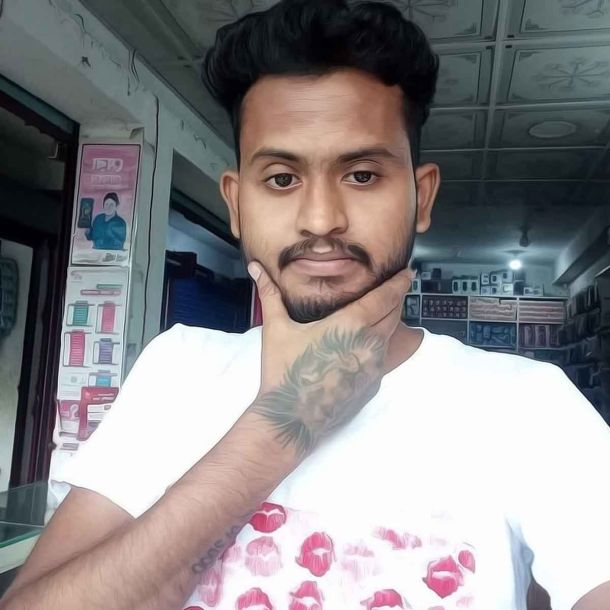MORE COVERAGE
"Hindu school of History needed": A call for a new narrative amidst Diverse Historical Interpretations, contrasting views of Communist Historians and Aligarh Apologists, to provide a comprehensive understanding of medieval India's intricate past
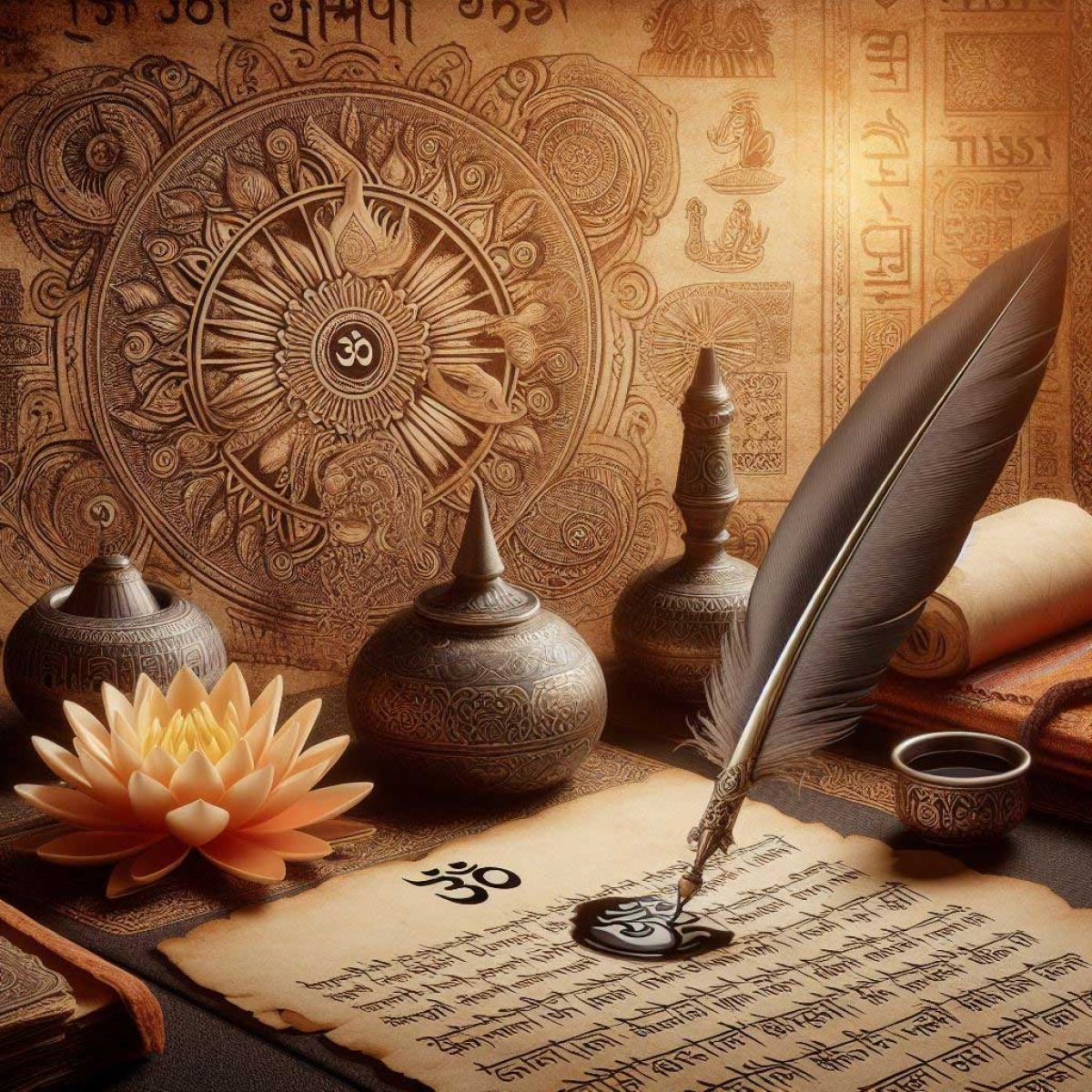
The National Council of Educational Research and Training (NCERT) in its guidelines for school-level history textbooks emphasizes that the role of religion in political conflicts should not be overstated. Setting aside the directives of the state about permissible content in history textbooks for a moment, it's crucial first to examine the historical facts as recorded by medieval historians and to consider the various interpretations of these facts.
Medieval India from a Hindu Perspective
The Hindu community of medieval India has left behind scant documentation of the numerous battles waged against Muslim invaders over centuries. What remains from this era are reflections in contemporary literature, outlining the perceived nature of the Muslim threat. Hindus of that period leveled seven principal accusations against Muslims:
- Slaying of Brahmins and cows;
- Breach of Hindu women's chastity;
- Destruction of temples and desecration of idols;
- Cutting of the hair tuft ('ikhã) and breaking of the sacred thread (sûtra);
- Forced conversions through circumcision and beef consumption;
- Enslavement and sale of captives, especially women and children, into concubinage and slavery;
- Looting and burning of properties that couldn't be carried away.
In historical references to the rise of entities like Vijayanagara, the Marathas, and the Sikhs, a stronger emphasis on religious motives is evident. These records clearly indicate that the defense of Hindu Dharma was a primary concern for figures like Madhava Vidyaranya, Samartha Ramdas, and Guru Teg Bahadur. The writings celebrating the deeds of Harihar, Bukka, Shivaji, and the Sikhs, composed by numerous Hindu poets, articulate that their primary aim was to protect various aspects of Hindu faith and society.
In contrast, Hindu accounts of pre-Islamic foreign invasions paint a different picture. Invaders like the Greeks, Scythians, Kushans, and Hunas are depicted as savage and plunder-driven, but not as assailants specifically targeting Hindu Dharma or its symbols. Furthermore, there are narratives of these foreign invaders adopting Indian religious paths like Shaivism, Vaishnavism, and Buddhism, integrating into Indian society after their initial conquests.
|
Muslim Narratives on Medieval Conflicts in India
On the other hand, Medieval Muslim historians have extensively documented the protracted conflicts between Hindus and Muslims, often providing detailed, almost daily accounts. These narratives predominantly depict Muslims (mu'mins) as martyrs and Hindus (kãfirs) as damned; cities and strongholds being overrun; widespread slaughter of citizens; Brahmins either being killed or coerced into consuming beef; destruction of temples to make way for mosques; idols being shattered, with fragments taken to Islamic strongholds to be stepped on by the faithful; and immense spoils of war, including the capture of Hindu women for sultans and high-ranking Muslims, and the selling of Hindu men, women, and children into slavery across the Islamic world. In these accounts, conversions to Islam are often depicted as occurring by force. Each conflict with Hindus is portrayed as a jihad, in line with the teachings of the Prophet and the Caliphs.
In these chronicles, there is a notable absence of any expressions of pity or remorse for acts of brutality or greed. Instead, Muslim historians record a sense of profound satisfaction and thankfulness to Allah for the spread of Islam, the eradication of idolatry, and the wealth accumulated for the Islamic state. This bounty is described as being used for the benefit of the Islamic state, distributed among mujahids, the ulama, and sufis, promoting Islamic education, and strengthening Islamic governance.
Interestingly, when these historians describe conflicts between Muslim rulers, the tone and focus shift dramatically. There is no longer an emphasis on Muslim versus Hindu, mosque versus temple, or iconoclasts versus idolaters. These accounts focus on political and military aspects such as broken treaties, unpaid tributes, strategies, mobilization of forces, and the outcomes of battles. While there are mentions of looting and violence, a distinct sense of sorrow pervades these accounts over Muslims fighting against each other, an act expressly forbidden by the Prophet. This contrast in narration offers a multifaceted view of the era's conflicts, highlighting different aspects depending on the nature of the confrontation.
|
Uncontested Truths in Recorded History
The facts presented in recorded history are clear. Hindu records contain only a minimal fraction of these historical facts, often in a disjointed and scattered form. In contrast, Muslim historians have provided a more comprehensive and systematic account of these events, meticulously documenting them by dynasty, reign, and battle. These Muslim historical accounts are preserved in manuscripts, modern critical editions, both original and translated, and are available in major world languages. These documents are housed in archives and libraries worldwide and have long been regarded as invaluable treasures in the palaces of Muslim nobility.
As such, there is little room for serious dispute regarding the factual content of recorded history. While some variations and internal contradictions might exist in different accounts of the same events or eras, these are generally considered minor discrepancies that can be resolved through critical analysis and cross-referencing.
The real divergence of opinion emerges in the interpretation of these facts and the subsequent value judgments passed on them. This is where the subjective and ideological biases of the interpreters and evaluators come into play. It is these varying interpretations and evaluations that have sparked controversies, particularly in the context of the appropriateness of certain textbooks for use in Indian schools and colleges. The guidelines established by the NCERT are, therefore, directed at navigating through these diverse interpretations and evaluations, aiming to present a balanced historical perspective.
|
Diverse Historical Interpretations
Orthodox Muslim historians, bolstered recently by petro-dollars, echo the sentiments of their medieval counterparts. They unabashedly praise the spread of Islam in India through military conquests, viewing the medieval Hindu-Muslim wars as battles between Islam and infidelity. These views align with the NCERT's caution against over-glorifying medieval rule and underplaying the criticism of bigotry, intolerance, and exclusiveness.
Academic historians, dominant since the British established India's education system in the mid-19th century, have primarily focused on chronological compilations of data from source books, assessing it for credibility rather than conceptual depth. Rarely have they drawn definitive conclusions about the nature of the Hindu-Muslim conflict in medieval India. Their moral judgments often concern minor issues, like the interpretation of treaties, rather than broader societal impacts. Their primary focus has been on analyzing the reasons behind the successes and failures of historical figures.
Secularists have criticized British historians for portraying Muslim rule in India negatively, suggesting a strategy to divide Hindus and Muslims. However, a more balanced view absolves the British of this intent. Post-independence, most Indian academic historians have continued in the British tradition, with secularists now accusing them of communal bias—a claim that seems more a reflection of the secularists' inability to resolve Hindu-Muslim tensions than a valid critique of historical scholarship.
Modernist Muslim historians, especially from Aligarh Muslim University, have sought to 'correct' the perspectives of academic historians. Notably, this effort to revise historical perspectives gained momentum post-independence, diverging from the earlier stance of pride in Muslim conquests shared by fundamentalists like Hali, Iqbal, and Maulana Azad. This shift in strategy by the Aligarh school, previously aligning with orthodox views, reflects a changing approach to understanding India's complex historical landscape.
|
Reassessing the Aligarh Interpretation
The Aligarh school of thought, primarily composed of historians and scholars, urges caution in equating Turkish imperialism with the Islamic faith. While the Turks had adopted Islam, this did not erase their cultural background as Central Asian nomads, often associated with barbarism. The argument posits that the cruelties committed by the Turks in India should not be attributed to Islam itself, suggesting that their short tenure under Islamic influence didn’t significantly alter their inherent nature. The school argues that the Turks were essentially exploiting Islam as a facade for their inherent tendencies.
Furthermore, the Aligarh school advocates for a critical reevaluation of the recorded atrocities committed by the Turks. They point out that Muslim historians of the time were primarily courtiers, whose narratives were often exaggerated to flatter their royal patrons. This could involve inflating numbers in battle reports or overstating the destruction of temples and the construction of mosques. Such accounts, according to the Aligarh school, were aimed more at pleasing the rulers’ vanity or religious zeal than at providing accurate historical records. Consequently, they suggest that these exaggerated tales should be viewed skeptically.
Another argument presented is the implication of forced conversions to Islam. The Aligarh historians argue that if force had been employed extensively for religious conversions, as suggested by medieval Muslim accounts, the entire Indian subcontinent would have become Muslim during the centuries of Muslim rule. The fact that India remained predominantly Hindu by the end of Muslim rule, they argue, indicates that forced conversion was not as prevalent as reported. They suggest that any religious conflict that did exist was more ideological, akin to the debates between Sufi orders and various Hindu sects.
The Aligarh school thus proposes that the conflicts between Muslim sultans and Hindu rajas should be interpreted primarily as political rather than religious. They contend that Muslim rulers, like their Hindu counterparts, were focused on empire-building. The argument extends to the structure of Hindu society, suggesting that its caste system played a role in the outcomes of these conflicts. Citing historian Mohammad Habib, they view the historical confrontations as a clash between the smritis (Hindu law codes) and the Shariat (Islamic law), rather than a straightforward religious war.
|
Communist Historians' Perspective on Medieval India
In the discourse on medieval Indian history, Communist historians have taken a unique stance, often turning into a critique of Hindu society, culture, and Dharma. They challenge what they perceive as the focus of 'Hindu communalist historians' on minor issues in Muslim history while overlooking significant flaws within Hindu society itself.
Communist historians argue that upper-caste Hindus have historically oppressed and exploited lower sections of Hindu society. They question the validity of Hindu grievances against Turks for similar actions, suggesting a degree of hypocrisy in mourning those oppressed by foreigners while ignoring homegrown social injustices.
Regarding the treatment of women in Hindu society, Communist historians assert that women have traditionally been subjugated and dishonored without causing significant concern among Hindu elites. They provocatively suggest that Turks, by incorporating Hindu women into their harems, might have offered them a different social status than what they experienced within Hindu society.
They also depict India as a vast prison for the poor, questioning the outcry over Turks taking some people to see the wider world. This perspective paints a picture of liberation rather than oppression in the actions of the Turks.
Communist historians also revisit the dietary habits of ancient Hindus, suggesting that beef consumption was abandoned due to Brahminical influence. They provocatively ask why there should be an outcry if Turks reintroduced Brahmins to what they consider healthier eating habits.
Regarding the wealth accumulated in Hindu temples, they argue that this wealth, often garnered from the labor of the masses, lay unused and that the Turks, by seizing it, perhaps put it to more productive use.
Finally, on the issue of idol destruction, Communist historians view idols, even those made of gold and adorned with precious stones, as symbols of primitive superstition. They argue that by destroying these idols, Turks might have inadvertently aided Hindus in overcoming what they consider superstitious beliefs.
These perspectives offered by Communist historians represent a radical reinterpretation of medieval Indian history, focusing on critiquing Hindu society and culture rather than solely examining the actions of Muslim rulers.
According to Communist historians, the narrative of the Muslim conquest of India is straightforward. They assert that the Turks essentially aided the oppressed Hindu masses in revolting against their traditional suppressors. They emphasize that Islam introduced concepts of social equality and brotherhood, which profoundly influenced Hindu society. Figures like Kabir, Nanak, Ravidas, and many other Hindu reformers are cited as examples of those who embraced these Islamic ideals to advocate for a society free from caste and class divisions.
While these may not be the exact words used by Communist historians, this viewpoint underpins their interpretation of medieval Muslim history. Their narrative suggests that the arrival of Islam played a significant role in social reform within Hindu society. The Aligarh school, which offers a more nuanced view of the Islamic impact on India, may find solace in this Communist interpretation, as it takes the argument further than they might have. The credibility of these Communist historians is enhanced, in their view, by the fact that many of them are Hindus themselves.
This Communist approach, which seemingly venerates Islamic contributions while devaluing Hindu traditions, is not limited to them. It is echoed by socialists, secularists, and a broader spectrum of Hindu intellectuals who identify as modern. This attitude has permeated those tasked with rewriting India's history, especially the medieval period under Muslim rule. This narrative is also shared by politicians, who are perceived as manipulating these historical interpretations with an eye on securing the Muslim vote.
Thus, the Communist perspective presents a radical reimagining of medieval Indian history, casting the Muslim conquest in a role of liberating social reform rather than mere imperialist expansion. This interpretation significantly impacts the contemporary understanding and teaching of this historical period.
|
The Need for a Hindu Historical Perspective
Currently, there is no established Hindu school of historical interpretation focusing on medieval India under Muslim rule. Hence, a distinct Hindu interpretation of this period remains absent. However, it is conceivable that should such a school of Hindu historians emerge, their perspective on this era might align with medieval Muslim historians on certain points. They might concur that the medieval period was largely marked by Hindu-Muslim conflict, with religion playing a pivotal role.
The primary distinction of this hypothetical Hindu school would likely lie in its reversal of roles assigned by Muslim historians, portraying those celebrated as heroes in Muslim narratives as villains, and vice versa. This perspective might view the Islamic influence during the medieval period as a tragic chapter in history, akin to the decline of Islam in 15th century Spain.
Such a Hindu school of history would provide an alternative viewpoint, potentially offering a counter-narrative to the existing interpretations by Muslim, Communist, and other historians. It would aim to reassess and reinterpret the events and figures of the time through a distinctly Hindu lens, contributing to a more diverse and comprehensive understanding of India's complex historical tapestry.
In conclusion, the emergence of a Hindu school of history could significantly enrich the discourse on medieval Indian history, ensuring a more balanced and varied historical narrative that encompasses multiple perspectives and interpretations.
 |
References:
Sita Ram Goel, Voice of India
 Support Us
Support Us
Satyagraha was born from the heart of our land, with an undying aim to unveil the true essence of Bharat. It seeks to illuminate the hidden tales of our valiant freedom fighters and the rich chronicles that haven't yet sung their complete melody in the mainstream.
While platforms like NDTV and 'The Wire' effortlessly garner funds under the banner of safeguarding democracy, we at Satyagraha walk a different path. Our strength and resonance come from you. In this journey to weave a stronger Bharat, every little contribution amplifies our voice. Let's come together, contribute as you can, and champion the true spirit of our nation.
 |  |  |
| ICICI Bank of Satyaagrah | Razorpay Bank of Satyaagrah | PayPal Bank of Satyaagrah - For International Payments |
If all above doesn't work, then try the LINK below:
Please share the article on other platforms
DISCLAIMER: The author is solely responsible for the views expressed in this article. The author carries the responsibility for citing and/or licensing of images utilized within the text. The website also frequently uses non-commercial images for representational purposes only in line with the article. We are not responsible for the authenticity of such images. If some images have a copyright issue, we request the person/entity to contact us at satyaagrahindia@gmail.com and we will take the necessary actions to resolve the issue.
Related Articles
- “Instead of causing chaos and rocking someone else’s boat, you need to row your own”: Prof Berry, a strong advocate of racial preferences in employment & education, said “Civil Rights laws were not passed to give civil rights protection to all Americans”
- "Purpose of creation of man, according to Islam, is that he should worship Allah": As there is one Allah, one Guide, one Book, there is also one Prayer, caught and fixed in a single formula, Islam has all ideological ingredients of imperialism in any age
- "In public realm, secularism should not concede a single inch to religious intrusions": India never knew a theocratic state till Islam entered Bharat, Hindu Dharma always was a pluralistic religion till genesis of Nehruvian Secularism for mystic reasons
- "Hindus have a tendency to dip their foot in self-destructive behavior": Hindu elite shouts slogan of sarva-dharma- samabhãva whereas Muslim claims, "Allah has mandated lands of the infidels to his last prophet, in turn, has bequeathed them to the Ummah"
- "Basic tool for manipulation of reality is the manipulation of words": Prof Castellano blames the US and its unjust foreign policies for having provoked 9/11 horrors in the first place, not poor security but America’s “imperialist” policies accountable
- “No one wants to be easy to get over. That’s what mind games are for”: Prof Derrick Bell at New York University School of Law was godfather, of “Critical Race Theory,” an academic tradition in which race plays same role as a class in the Marxist paradigm
- "Behold it is born. It is already sanctioned by the blood of martyred Indian youths": Madam Bhikhaiji Cama, the Brave lady to first hoist India’s flag on foreign Soil - Formative Years
- "Fighting for Islam, that is not suicide. They kill themselves for Islam": Ihsan Bagby, Prof. of Islamic studies at Kentucky University declared that Muslims can never be full citizens of the US as they can never commit to its institutions & ideologies
- Asst. Professor of Comparative Literature at Columbia University, Gil Anidjar is an Anti-Israel activist, apologist for Islamic radicalism and identifies “good teaching” with pro-Palestinian activism: The 101 Most Dangerous Academics in America
- Hindu seers and sages could tap sources of universal spirituality because they did not start with an a priori assumption of an Almighty God whom man had to fear and obey in awe and objection - Defence of Hindu Society
- "Aum Mahadevaya Namaha - The Great Universal God": Sanatana Dharma forces human mind, time and time again, to accept the fact that Divine is all that exists, both clean and unclean, pure and impure, auspicious and inauspicious
- Introduction - Understanding Islam through Hadis - Religious Faith or Fanaticism
- "Crumbling Chronicles, their stories yearn to be retold": Each intricately carved stone horse in the Pir Panjals carries a profound secret. Once symbols of Bharat's grandeur, now overshadowed by indifference, and their plea for acknowledgment grows louder
- "How can you tell when a political ideology has become the equivalent of a religion?": Associate Professor at Truman State University, Marc Becker is an organizer for Historians against the War with a long history of radicalism and antipathy toward the US
- “Who says exactly what they’re thinking? What kind of a game is that?”: Committed Marxist, Prof. Berlowitz teaches “resistance” as in, “Privatization must be resisted,” - only a Marxist could make the connection between resisting privatization and peace
Related Articles
Twitter Coverage
Satyaagrah
Written on
Satyaagrah
Written on
Satyaagrah
Written on
Satyaagrah
Written on
Satyaagrah
Written on



